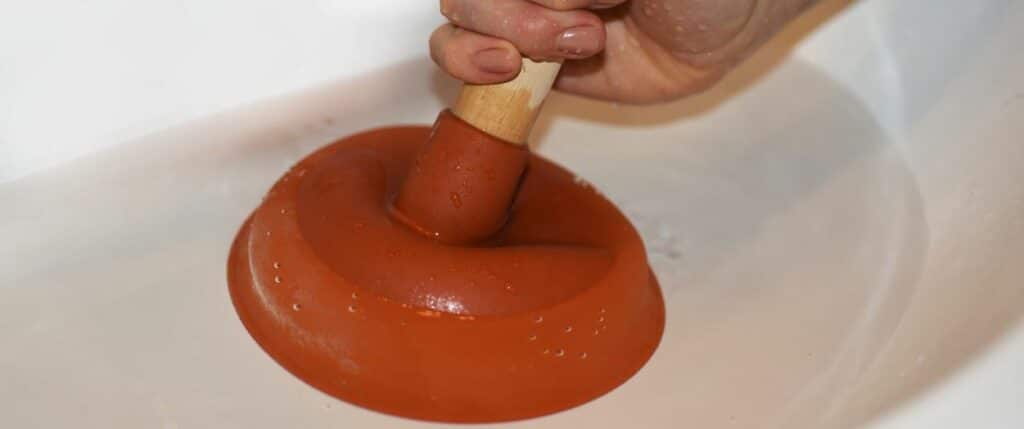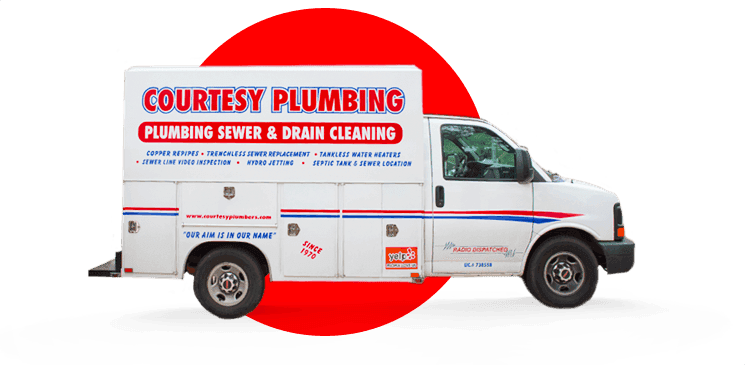Whether you’re showering in ankle-deep water or patiently waiting for the sink to drain before you can use it again, a stopped-up drain is an inconvenience that needs to be remedied right away.
However, you can make the situation worse in attempting to solve the problem yourself. Follow these tips to restore your plumbing’s functionality without creating a bigger mess.
The Do’s and Don’ts of Dislodging a Clog
Do: Use a Plunger
As much as technology has advanced over the years, we still turn to a rubber cup attached to a stick to break up clogs. The plunger is a tried and true tool for generating suction in a drain line. With enough force, you can dislodge the obstruction to get your drain flowing again.
Consider these plunging best practices:
- Whether you’re plunging a toilet or a sink, create an airtight seal by submerging the cup in several inches of water.
- To start, push gently down on the cup to force out air. Even a little air can interfere with the plunging process.
- Keep the handle vertical when plunging for maximum leverage.
- Don’t give up! It may take a couple dozen plunges to clear the blockage.
Don’t: Use the Wrong Plunger
You wouldn’t use a flathead screwdriver on a Phillips screw. Likewise, you should use a cup plunger on a clogged toilet. To get the job done, you need the right tool for the job. There are several different types of plunger, each designed for a specific purpose.
- Cup plunger: A standard cup plunger is intended to lay flat over a drain in a sink or bathtub, forming a strong seal.
- Flange plunger: The flange plunger has a sleeve that extends from the cup to fit within the toilet drain’s contours, locking out air.
- Accordion plunger: This plunger features a stiff, accordion-style cup to generate maximum suction. Use it for especially tough clogs.
Do not — we repeat DO NOT — use a plunger in conjunction with chemical drain cleaners. Liquid drain cleaners are highly corrosive (more on that in a moment). When plunging, toxic chemicals could splash out of the drain, getting on your skin or in your eyes or mouth. That’s extremely dangerous.
Do: Use a Plumber’s Snake
A plumber’s snake uses a long, flexible steel cable to reach deep down your drain to remove a clog. Plumber’s snakes can extend up to 50 feet to either grind up an obstruction or hooking it to be pulled free as your reel the cable back up.
Here are some helpful pointers for using a plumber’s snake:
- Place the cable’s head in the drain and gently turn the handle.
- Keep the handle close to the drain to prevent slack.
- Once the cable head reaches the obstruction, gently move the cable around so that the auger can hook the clog.
- After reeling up the cable, run water to see if you’ve removed the clog. If it didn’t repeat, consider calling the professionals.
Don’t: Jam the Plumber’s Snake Down the Drain
This tool requires a bit of finesse. Don’t rush it! Cranking too hard could damage the drain’s entrance or the pipe’s interior. When you feel resistance, stop cranking, or you could push the clog farther down the line.
Do: Use Vinegar and Baking Soda
If you’re going to treat your drain chemically, use a safe, natural solution. Vinegar and baking soda combine to create a gentle cleansing agent helping remove minor clogs.
How to use vinegar and baking soda to clear a drain:
- Pour a hot pot of water down the drain to loosen the clog.
- Pour 1 cup of baking soda into the drain, followed by 1 cup of vinegar.
- Immediately cover the drain with a plug and let the solution sit for 10 to 20 minutes.
- Flush with another pot of hot water.
Don’t: Use a Chemical Drain Cleaner
Chemical drain cleaners are overkill. Yes, they’ll dissolve a clog, but they’re so corrosive that they’ll continue to erode the pipe material with repeated use. Even worse, a chemical drain cleaner might not even work. This is especially true if the drain is clogged due to tree roots or collapsed sewer line.
Is your drain still clogged? Turn to the Covina drain cleaning specialists at Courtesy Plumbing. Call (626) 774-7167 to schedule your appointment.



